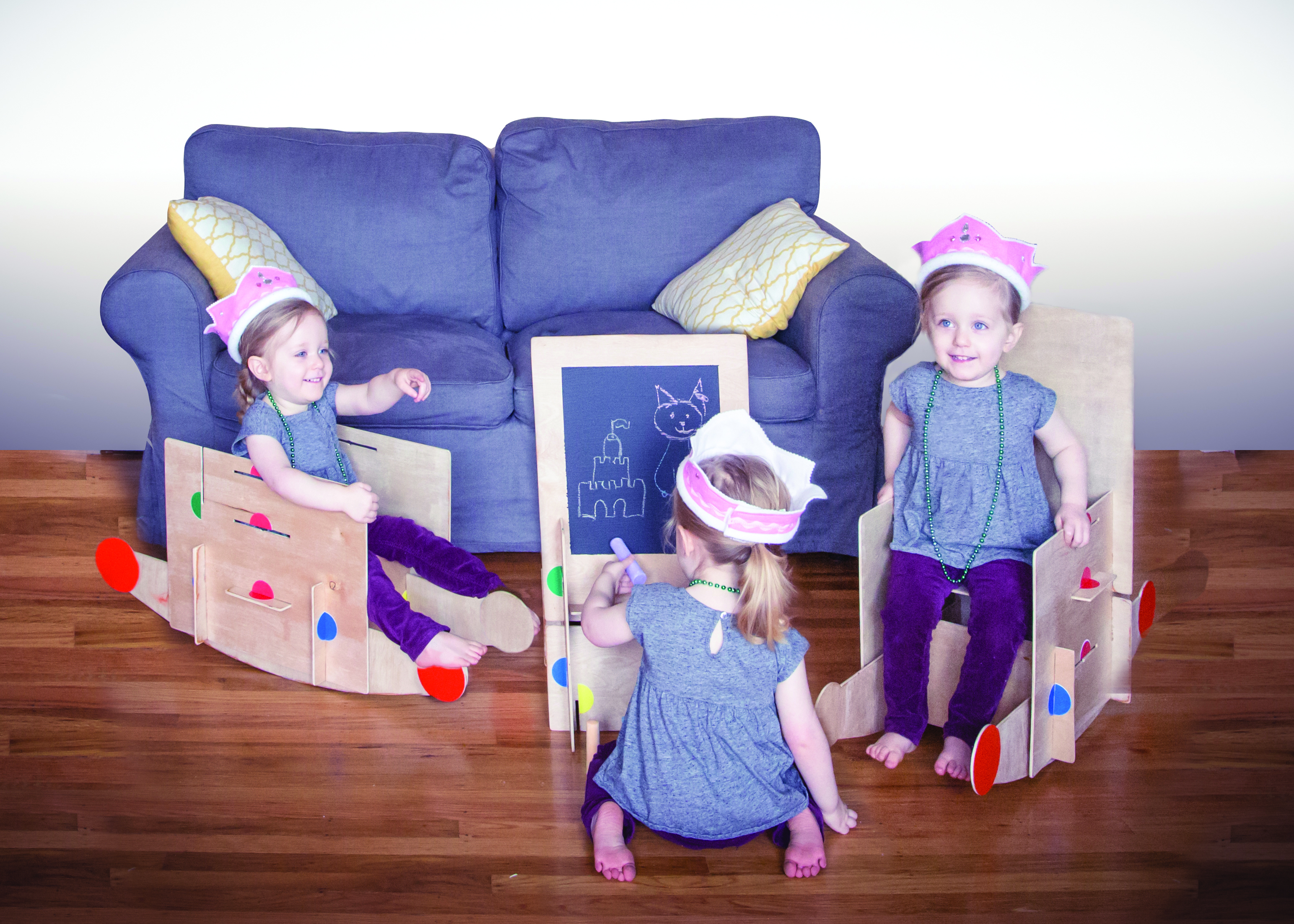

A “few” years back, as a final-semester project at the NC State University School of Industrial Design, I made a kit of plywood parts from which could be assembled several useful pieces of children’s furniture. I called it “FUNiture.”
Thanks to help from my good friend, prolific author and skilled craftsman Phil Bowie, this resurrected easy-to-make kit is now more ergonomically correct, safer, and suitable for ages 2 to 6. (The younger ones will need help with assembly.) The furniture needs no fasteners; gravity and cross-half lap joints do the trick. The parts can be stored flat, taking up very little space. The project takes about a weekend to complete and can cost around $40 – $50.

Colorful stickers at the joints help kids put the FUNiture together correctly by matching the colors of slots and tabs, to make a stool, chair, chalkboard, “boat,” and rocking chair. Younger kids will probably ignore the color-coding, which can yield interesting, if impractical, creations.



